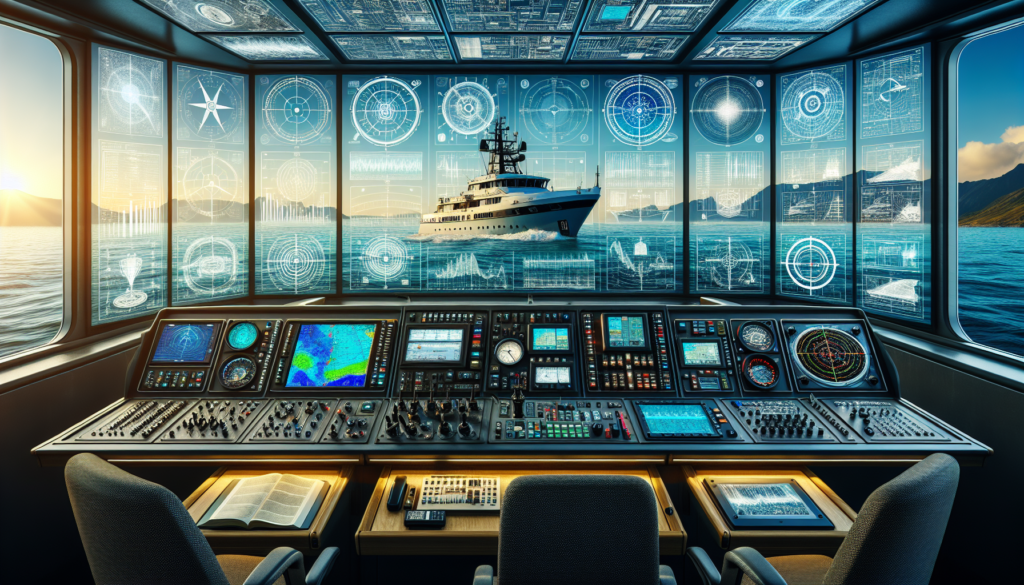Exploring the Depths: A Comprehensive Guide to Marine Electronics
When we think of the vast expanse of the ocean, we often picture pristine waters, teeming with marine life and shrouded in mystery. However, beneath the surface lies a world that is as complex as it is fascinating. In this article, we delve into the realm of marine electronics, a crucial aspect of modern maritime technology that has revolutionized the way we navigate, communicate, and explore the ocean. From cutting-edge sonar systems to satellite navigation devices, marine electronics play a pivotal role in ensuring the safety, efficiency, and sustainability of marine activities. Join us on this exploration as we uncover the inner workings of marine electronics and their impact on the maritime industry.
The Evolution of Marine Electronics
Marine electronics have come a long way since their inception. In the early days of seafaring, sailors relied on rudimentary tools such as compasses and sextants to navigate the seas. However, with advancements in technology, marine electronics have become increasingly sophisticated, offering a wide range of capabilities that have revolutionized the way we interact with the ocean. Today, we have access to a plethora of electronic devices that allow us to map the ocean floor, track marine life, and communicate with other vessels in real-time. From depth sounders to radar systems, the evolution of marine electronics has transformed the way we explore and exploit the ocean’s resources.
Sonar Systems: Mapping the Depths
One of the most essential components of marine electronics is the sonar system. Sonar, which stands for Sound Navigation and Ranging, is a technology that uses sound waves to detect objects underwater. By emitting sound pulses and measuring the time it takes for them to bounce back, sonar systems can create detailed maps of the ocean floor and identify potential hazards such as rocks, reefs, and underwater obstructions. Sonar systems are used by a wide range of marine vessels, from fishing boats to submarines, to navigate safely in the open sea. In recent years, advancements in sonar technology have led to the development of high-resolution imaging systems that can provide detailed 3D maps of underwater topography, revolutionizing our understanding of the ocean environment.

GPS and Satellite Navigation
Global Positioning System (GPS) technology has become an indispensable tool for marine navigation. By using a network of satellites to triangulate the position of a receiver on Earth, GPS devices can provide real-time information on a vessel’s location, speed, and heading. This technology has revolutionized maritime navigation by allowing sailors to navigate with precision and accuracy, even in the most remote parts of the ocean. In addition to GPS, satellite navigation systems such as Galileo and GLONASS offer alternative positioning solutions that enhance the reliability and redundancy of marine navigation systems. By combining GPS with other satellite navigation technologies, sailors can ensure that they have access to accurate positioning information no matter where they are on the high seas.
Communication Systems: Staying Connected at Sea
Communication is essential for safe and efficient maritime operations. Marine electronics offer a wide range of communication systems that allow vessels to stay connected with each other and with onshore facilities. VHF radios, satellite phones, and AIS (Automatic Identification System) are just a few examples of the communication technologies that are commonly used in the maritime industry. VHF radios provide short-range communication between vessels, while satellite phones offer long-distance communication capabilities that are essential for vessels operating in remote areas. AIS, on the other hand, is a system that allows vessels to exchange real-time information on their identity, position, and course, helping to prevent collisions and improve situational awareness on the water.

Weather Monitoring and Forecasting
Weather plays a crucial role in maritime operations, influencing everything from sailing routes to fishing patterns. Marine electronics offer a variety of tools for monitoring and forecasting weather conditions at sea. Weather radars, satellite imagery, and onboard weather stations are just a few examples of the technologies that are used to track storms, monitor sea conditions, and predict weather patterns. By staying informed about changing weather conditions, sailors can make informed decisions about when to set sail, where to navigate, and how to respond to emergencies at sea. Weather monitoring systems have become an essential component of marine electronics, helping to enhance the safety and efficiency of maritime operations around the world.
Environmental Monitoring and Conservation
Marine electronics also play a crucial role in environmental monitoring and conservation efforts. By using sensors, cameras, and other monitoring devices, researchers can collect data on water quality, marine life, and ecosystem health. This information helps to inform conservation strategies, monitor the impact of human activities on the marine environment, and protect endangered species. Marine electronics have revolutionized the way we study and protect the ocean, providing valuable insights into the complex interactions between marine organisms and their habitats. From tracking the migration patterns of marine mammals to monitoring coral reefs for signs of bleaching, marine electronics are essential tools for understanding and preserving the delicate balance of the marine ecosystem.
Challenges and Controversies
While marine electronics offer a wide range of benefits, they also pose several challenges and controversies. One of the primary concerns is the risk of electromagnetic interference, which can disrupt the functioning of electronic devices and systems on board vessels. Another issue is the potential for cyberattacks on maritime communication systems, which could compromise the safety and security of vessels at sea. Additionally, the proliferation of marine electronics has raised questions about their impact on marine life, with some studies suggesting that underwater noise pollution from sonar systems and other devices can harm marine mammals and disrupt their behavior. These challenges highlight the need for responsible use of marine electronics and the development of regulations and guidelines to ensure their safe and sustainable integration into marine activities.
Future Trends and Innovations
The future of marine electronics is filled with exciting possibilities and innovations. From autonomous underwater vehicles to artificial intelligence-powered navigation systems, new technologies are transforming the way we interact with the ocean. One emerging trend is the use of drones and unmanned aerial vehicles for marine surveillance and research, allowing researchers to collect data in remote and inaccessible areas of the ocean. Another innovation is the development of underwater robots that can perform tasks such as seabed mapping, pipeline inspection, and marine salvage operations with precision and efficiency. As technology continues to advance, the capabilities of marine electronics will only grow, opening up new opportunities for exploration, research, and conservation in the marine environment.
Conclusion
To wrap things up, marine electronics have revolutionized the way we interact with the ocean, offering a wide range of capabilities that enhance the safety, efficiency, and sustainability of maritime activities. From sonar systems to GPS devices, communication systems to weather monitoring tools, marine electronics play a crucial role in navigating the complex and challenging environment of the open sea. As we look to the future, the possibilities for innovation and advancement in marine electronics are endless, promising new opportunities for exploration, research, and conservation in the marine environment. By harnessing the power of technology and embracing responsible practices, we can ensure that marine electronics continue to benefit both humanity and the ocean ecosystems that we depend on for our survival.



